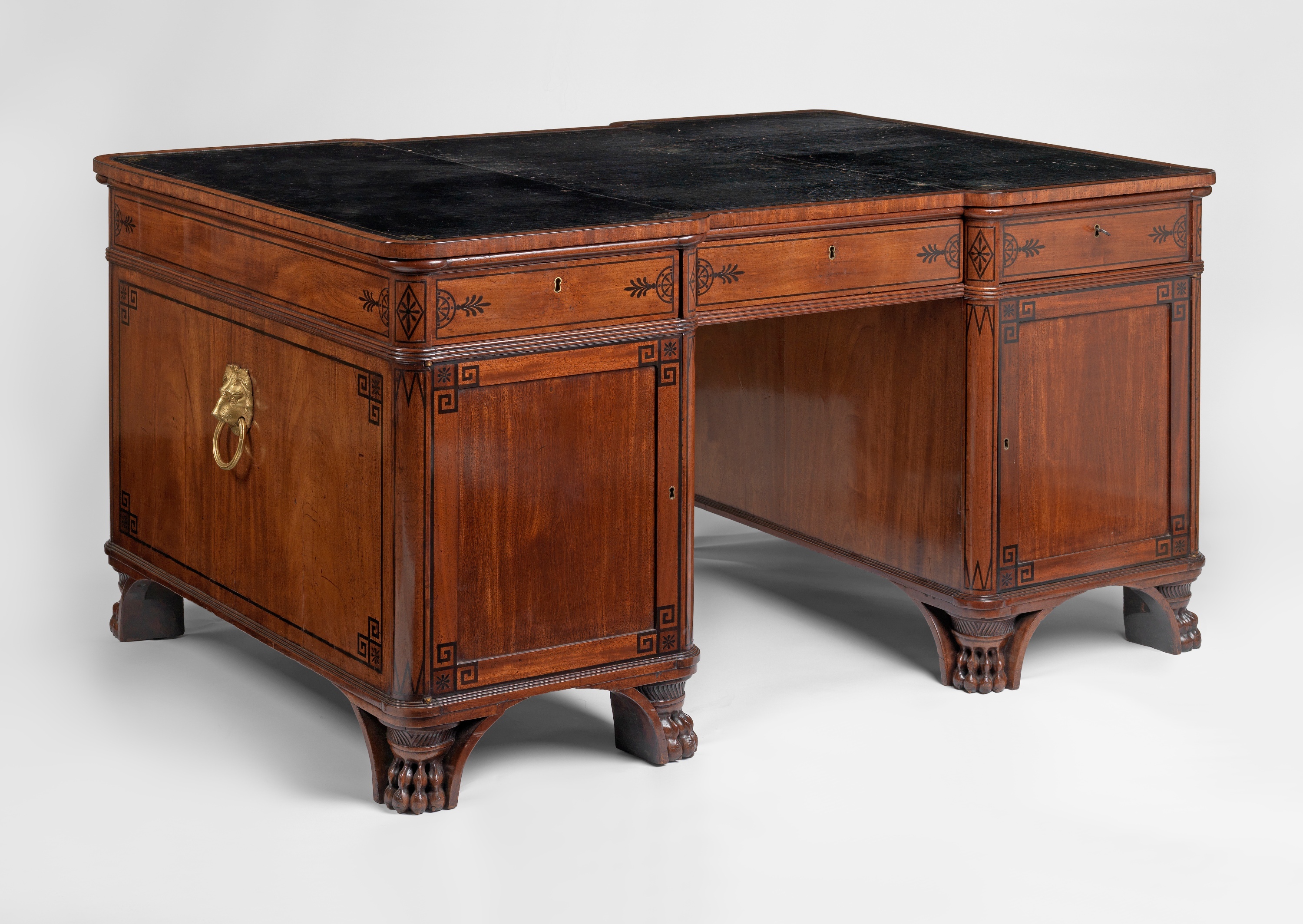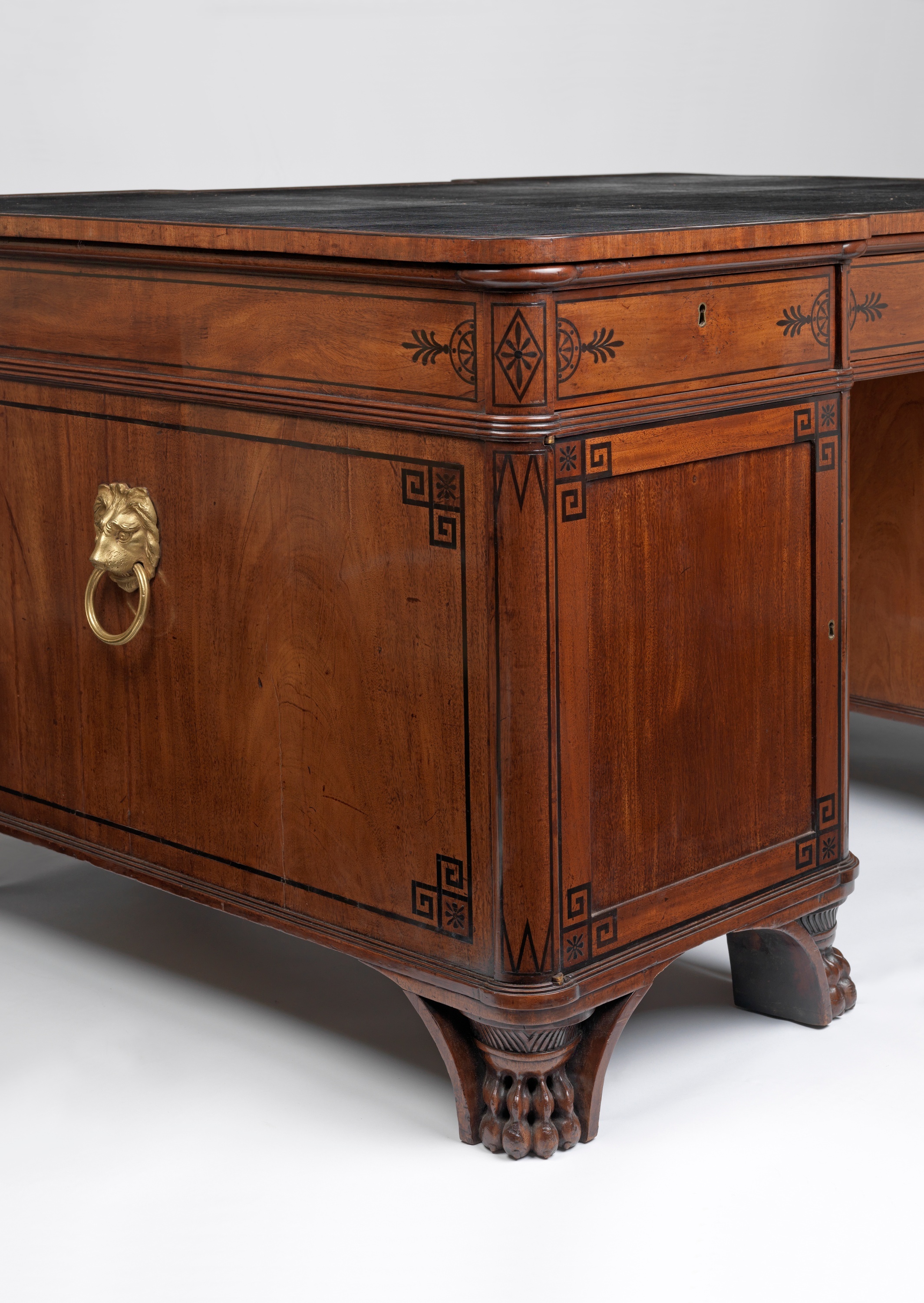

Circa 1810


Partridge Fine Arts, English Furniture and Works of Art, 2001, no. 58, p. 132.
This mahogany pedestal desk betrays the influence of the celebrated arbiter of early Regency taste, Thomas Hope (d. 1831). The ebony strung anthemion on the frieze drawers, as well as, the stylised Greek keys to the corners of the cupboard doors both point to Hope’s influential gôut grec. The chief exponent of the 19th century classical revival Hope published his designs in Household Furniture and Interior Decoration, 1807. Hope’s folio bought about a change in the interior decoration of houses. His style generally referred to as ‘English Empire’ was furthered by contemporary designers and cabinet makers such as Thomas Sheraton and continued well into the 19th Century.
The desk resembles one from the collection of the Duke of Leeds, Hornby Castle, Yorkshire, which is illustrated by Margaret Jourdain, (1934, fig 90). It is certainly by the same maker: they share the same form and similar decorative detail, particularly the highly distinctive, contrasting ebonised stringing against the rich, dark red mahogany background imitating the antique. Each desk also has the same fitting mechanism; the four component parts, the two pedestals, central frieze drawer and the top slotting together with metal fittings.
| DIMENSIONS | CM | INCHES |
|---|---|---|
| Width: | 152 | 60 |
| Depth: | 107 | 42 |
| Height: | 80 | 31.5 |